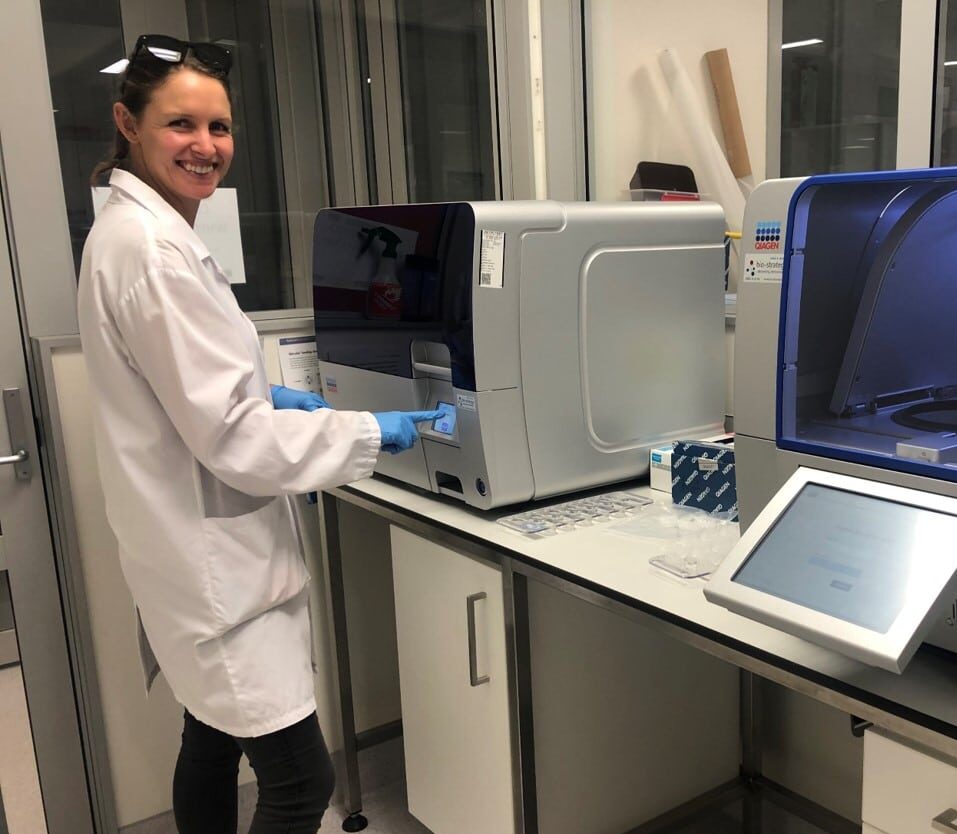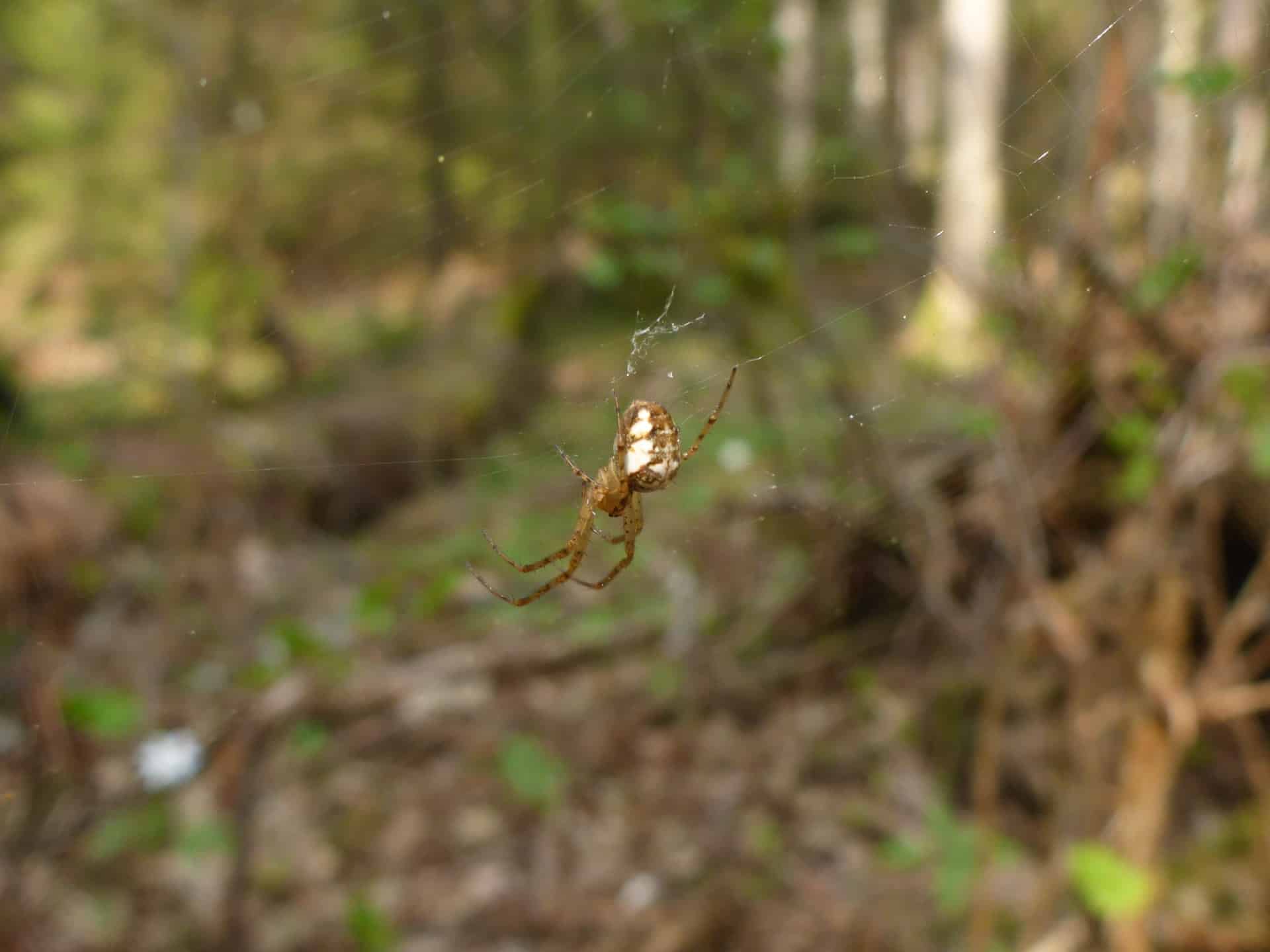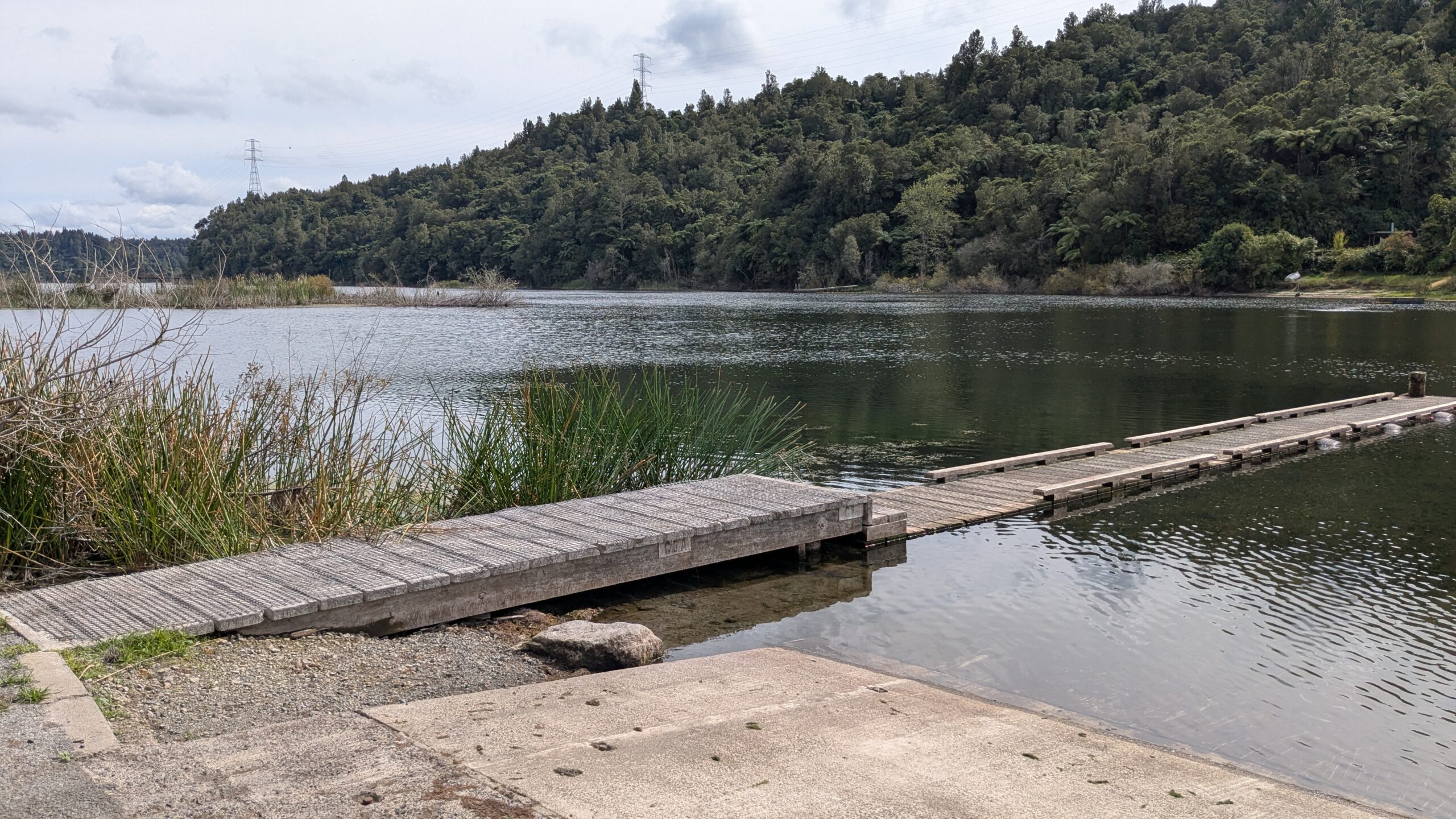Read this story on Sciblogs
McKayla Holloway
The helicopter carries a team of four Lakes380 scientists and me; we hug the Gneiss rock walls that tower over Lake Manapouri.
It’s arguably one of New Zealand’s most well-known lakes – made famous by the ‘Save Manapouri’ campaign of the 1970s. My chest is drawn back into my seat as we swoop over Wilmot Pass; out the window the Fiordland landscape is filled with valleys, and lakes carved out by multiple glaciations.
Landing on the only flat-ish piece of ground next to Lake Troup, we pile out and huddle together as the wash from the rotors create havoc. The speed of the rotors increases, and the helicopter is out of sight within seconds. The pilot will return with boats and a sling load of scientific gear, but for now, we have time to appreciate the 200-metre cliffs that surround the lake.

My colleagues and I are on a mission to find out the secret lives of New Zealand’s lakes. New Zealand has over 3,800 lakes (larger than 1 ha) used for recreation as well as a source of drinking water, irrigation, and electricity generation. They also provide essential habitat for our freshwater species and have high cultural significance. Surprisingly, despite their importance, little is known about their health. Less than five per cent of lakes are monitored, and there is no information prior to human disturbance. This monitoring data provides little evidence to show when and why changes happen. The natural condition of New Zealand’s lakes largely remains a secret.
Lakes380 is on a quest to change this. Funded by the Government’s Endeavour Fund, it is an ambitious project that aims to sample around 10% (380) of New Zealand’s lakes. Each lake will receive a health-check; vital signs measured such as temperature, dissolved oxygen, pH, turbidity and chlorophyll-a levels, as well as a suite of samples extracted from the water column and mud at the bottom of the lake.
The mud can be likened to the pages of a history book, continuously layering on top of one another recording environmental history, 24 hours a day, 7 days a week, year after year, for thousands of years. These natural archives provide an insight into current and historical aquatic communities, vegetation, environmental and climate change, in addition to human impacts.
Samples collected will be analysed using a range of methods from DNA and radiocarbon dating to the identification of charcoal and pollen extracted from the mud. GNS scientist and project co-leader Dr Marcus Vandergoes explains, “These [pollen and charcoal] fragments can be used to pinpoint events in time, such as when surrounding land and bush were cleared. We aim to capture up to 1,000 years of lake history.”

Dr Susie Wood, Cawthron scientist and project co-leader explains the value of the findings:
“By increasing our understand of how and why these lakes have changed, the findings from the project will be used to help predict future changes, while also informing management and restoration efforts on a national scale.”
Lakes380 is collaborating with iwi and hapū across New Zealand. The social science side of the mission is just as crucial as the biophysical science. The project team will be guided by matauranga Maori [knowledge] and oral histories to enrich and inform our joint aspirations for enhancing New Zealand’s lakes.
Back in the mountains, above Doubtful Sound, Lake Troup is reluctant to give away its secrets. A field of boulders 95 metres below the surface has made sampling challenging. After five hours, our work is complete. Samples from high altitude lakes like Lake Troup will allow scientists to examine how the climate has changed over the last 1000 years. But for now, it’s back in the helicopter and off to the next lake.
Follow us as we discover the histories of New Zealand’s lakes www.lakes380.com or #lakes380 for Instagram or Twitter.
Mckayla is studying towards a Master in Science in Society at Victoria University of Wellington and works for the Cawthron Institute. With a background in environmental science and visual communication she is interested in applying these skills in the science communication space to help improve the impact of science. This post was written as part of SCIS 410 – science communication.
Featured image: Looking across Lake Troup to the 200-metre high cliffs that surround the lake. Photo: McKayla Holloway, CC BY-NC-SA 4.0



